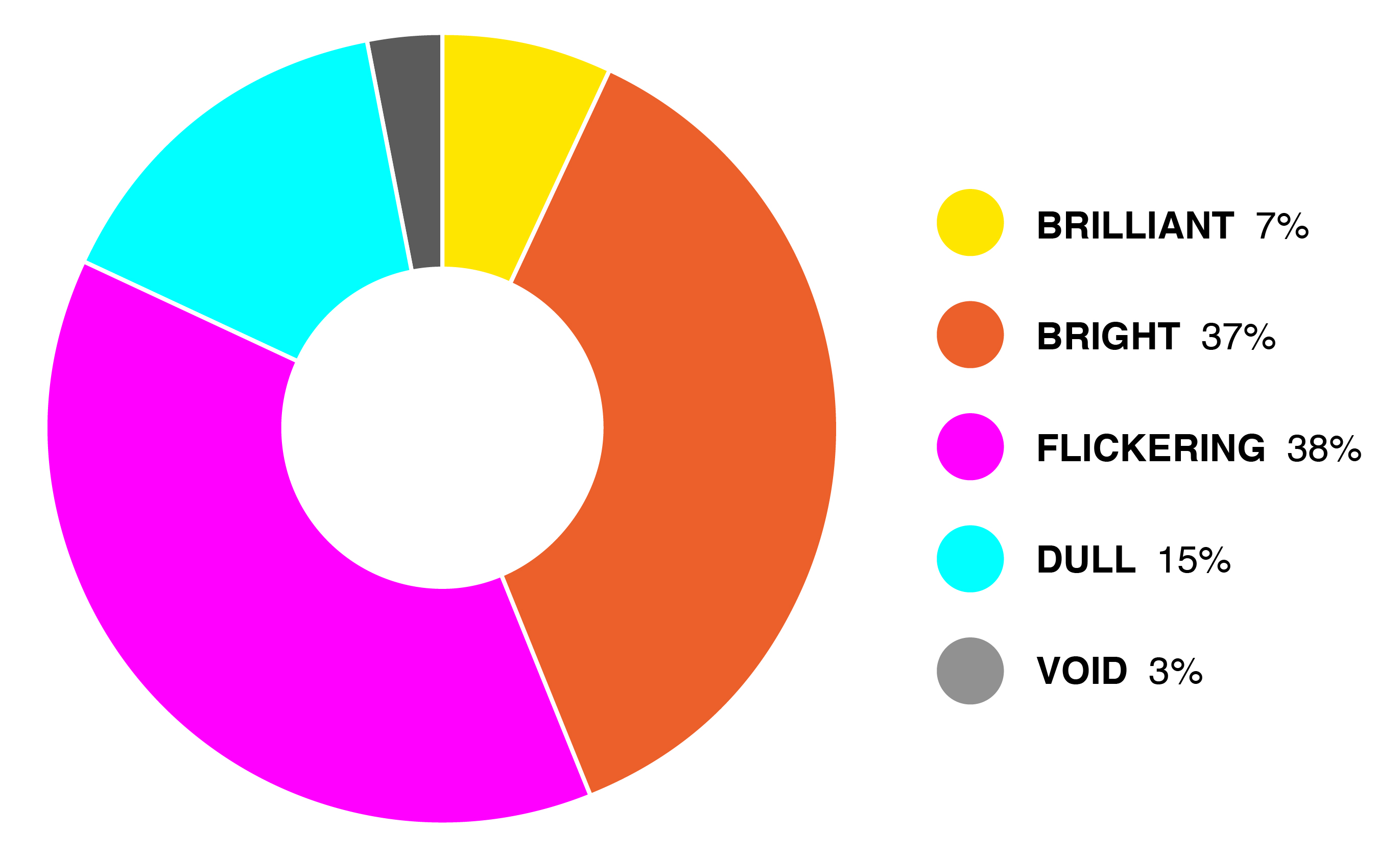Brand Effectiveness Score Card: results so far
As featured in Charity Comms by Ben Ryder-Smith & Lucy McLaren
The Brand Effectiveness Score Cardlaunched this February to offer charity sector communications professionals the opportunity to evaluate and benchmark their brand’s effectiveness.
Described by one charity chief executive as thought provoking, helpful and easy to use, we are extremely grateful to have gathered more than 250 Score Card responses since launch.
A Score Card overview
Based on respondents input, brands are scored from Void to Brilliant, with just 7% of brands classifying as Brilliant.

By definition, Brilliant brands fire on all cylinders, driving their charity forward, while engaging audiences to open their minds and wallets.
This suggests 93% of charity brands could do with more attention, and the 18% classifying as Dull or Void should act now before it’s too late.
We took a particular look at the 1% of charities who account for three quarters of the sectors income. Unsurprisingly, those working for charities with an annual turnover of more than £100 million are a confident bunch. 73% ‘like’ or ‘love’ their brand, with 60% of brands classifying as Bright.
But no matter the size, no charity is immune from the pressure of generating income. This cited as a key challenge by 61% of respondents from charities with incomes of £100 million or more.
Love the cause you work for, but embarrassed by the brand?
Just 1 in 2 (51%) say they ‘like’ or ‘love’ the brand they work for – but we don’t believe that half of charity sector professionals dislike their charity’s cause. Rather, we suspect that many share a frustration that their charity’s brand has not been prioritised, and therefore is failing to connect with people.
Too many charities to choose from
Just 26% of respondents indicated differentiation to be a challenge they faced. This was in comparison to the 63% who cited income generation, and the 54% who cited engagement.
For example, according to Barclays 2018 ‘Future of Giving’ report 1 in 3 of the UK public who don’t give to charity, don’t do so because they struggle to choose between multiple similar causes – this represents a staggering number of potential givers who get lost in the sea of similar-sounding charities and abandon their good intentions to give.
Given that there are 168,000+ UK charities, it’s understandable that navigating choice is challenging. Neuroscience has found that if there are more than 15 similar-looking choices, the most likely outcome is that we get frustrated and make no choice.

Unlocking the power of brand to make a real difference
The power of a brand is realised when every stakeholder can clearly articulate why an organisation exists, as well as the difference that charity makes in the world around it, both today and tomorrow.
When the brand message connects with people: wallets open, volunteers sign-up, and senior leadership have a clear decision-making tool to help drive an organisation forward.
We take a co-creative approach to brand building. This ensures our clients brands reflect the views of both the organisation and external audiences, including those tough to reach, not-yet-convinced supporters.
The results are powerful….
Dr Hadwen’s Trust believe animal testing is both cruel and ineffective, and needed a brand to attract more money to fund more science.
We were tasked with building that brand to be equally comfortable walking through the gates of a vegan festival, as it was striding through the doors of a world-class research institute.
Working with the staff to join the dots we distilled their restless energy into a new brand positioning. Testing also highlighted a need for a new name, and the descriptive option: Animal Free Research UK immediately leapt out from the pack.
After updating the name, positioning and visual identity, the charity has been able to benefit from a 29% increase in income.
Confident brands communicate their real difference
Of all charities, cancer charities came out as having the most confident brands.
65% of cancer charities classified as having Bright or Brilliant brands, with just 4% classifying as Dull.
There’s a strong correlation between strong brands and strong income. Cancer charities gain the lion’s share of UK giving – 2/3s of those who give to charity give to a cancer related charity according to research from Givey and Opinium.
The digital donations platform also highlights children’s charities as the second most popular sub-sector, with 45% of the giving public donating to children’s charities. Interestingly, the Score Card found children’s charities to have more Brilliant brands than any other sub-sector, with 22% classifying as Brilliant.
Charity brands should be able to own their real difference with more gravitas than any other sector – so let’s not be afraid to stand out.
Yes, it can be challenging when there are many amazing charities operating in a similar space, but a clear articulation of the unique contribution your charity makes to the world will drive confident decision-making at all levels, and ultimately convince potential supporters, to give you their time and their money to help further your cause.



